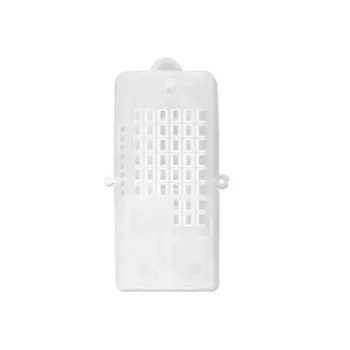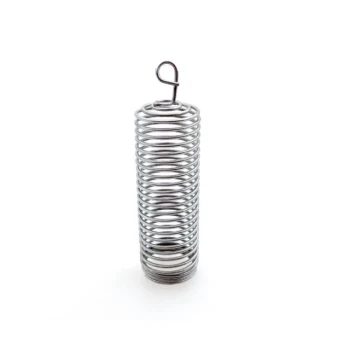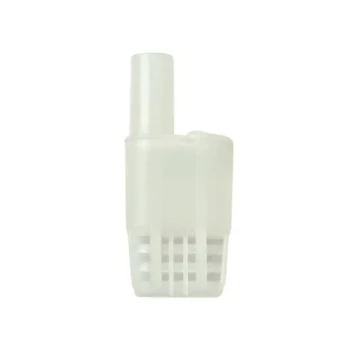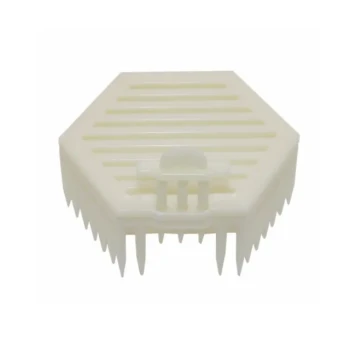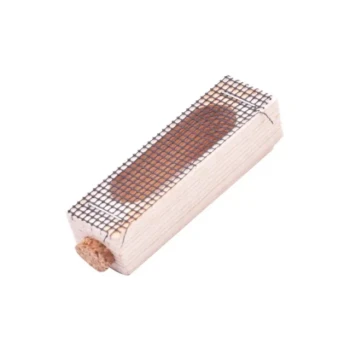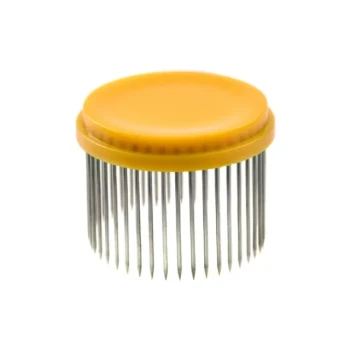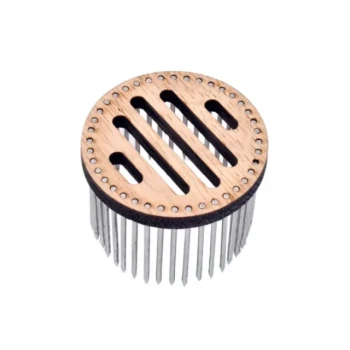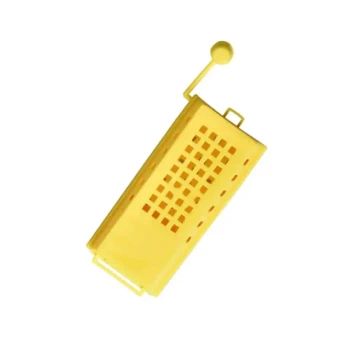The success of a bee colony hinges on a single individual. When introducing a new queen, worker bees may reject her because her scent is unfamiliar. Her unique pheromones mark her as a foreign invader, triggering the colony's powerful defensive instincts to protect their hive from outsiders.
The core issue isn't malice, but identity. A honeybee colony operates as a single organism united by a unique scent signature from their queen. Rejection is a biological defense mechanism against a perceived threat, and acceptance can only be achieved by gradually acclimating the colony to her new chemical signature.
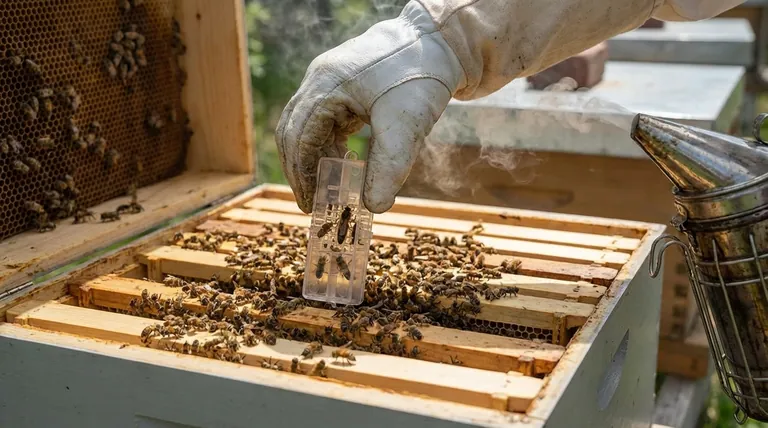
The Core Reason: A Colony's Scent Identity
A bee colony's entire social structure is built on chemical communication. A new queen from a different hive represents a complete disruption to this established order.
Pheromones as a Hive-Wide Passport
The queen constantly produces a unique blend of chemicals called pheromones. Worker bees spread these pheromones throughout the hive during grooming and feeding, creating a distinct "scent profile" for the colony.
This scent acts like a passport, allowing bees to instantly recognize hive members versus foreign intruders.
The New Queen as an Invader
A new queen, with her foreign pheromones, is immediately identified as a non-member. To the worker bees, her scent signals a potential usurper attempting to take over their colony.
This triggers an instinctual, aggressive response designed to eliminate the threat and protect the hive's genetic line.
The Critical Acclimation Period
To overcome this, beekeepers introduce a new queen within a small cage. This cage acts as a protective barrier, allowing her to live safely within the hive for several days.
During this time, her scent slowly spreads throughout the colony, while she picks up the colony's scent. This gradual exposure allows the worker bees to acclimate to her presence and eventually recognize her as the new leader.
Recognizing the Signs of Rejection
Observing the worker bees' behavior toward the caged queen is the only reliable way to gauge their acceptance. This process typically takes between two and six days.
Aggressive Behavior at the Cage
Clear signs of rejection include workers biting at the wire mesh of the cage or clinging to it aggressively, even when you gently brush them aside.
This indicates they are still in "attack mode" and view her as a threat.
The Danger of "Balling"
The most extreme form of rejection is "balling." This is when a large group of worker bees tightly surrounds the queen in a ball.
They are not trying to care for her; they are vibrating their wing muscles to generate intense heat, effectively "cooking" her to death. If you see this behavior, the colony has not accepted her.
Signs of Acceptance
In contrast, acceptance is indicated by bees walking calmly on the cage, attempting to feed the queen through the mesh, or showing only casual interest. This calm behavior means her scent is no longer triggering their defensive instincts.
Common Pitfalls That Increase Rejection Risk
While scent is the primary factor, certain conditions within the hive can make a successful introduction much more difficult.
Introducing Too Soon
A colony must be "queenless" and aware of it before they will consider a replacement. If you introduce a new queen while the old one's pheromones still linger or if the workers have already started raising their own emergency queen, they will almost certainly reject the newcomer.
A Weak or Stressed Colony
A hive suffering from disease, pests like Varroa mites, or a lack of food is under significant stress. Stressed colonies are often more defensive and less predictable, making them less receptive to change.
A Low-Quality Queen
Not all queens are equal. A queen who is poorly mated or unhealthy may produce weak pheromones. Without a strong chemical signal, she cannot establish dominance and suppress the workers' instinct to raise their own queen, leading to eventual rejection.
Making the Right Choice for Your Goal
Successfully introducing a new queen is about patiently managing the colony's instincts. Your observations should guide your timing.
- If your primary focus is minimizing risk: Ensure the colony is queenless for at least 24 hours before introducing the new queen in her cage so they recognize their need for one.
- If your primary focus is confirming acceptance: Observe the worker bees' behavior on the cage daily; look for calm curiosity and feeding attempts, not aggressive biting, before you release her.
- If your primary focus is long-term stability: Only requeen when the colony is strong, healthy, and has ample resources to support a new leader.
By understanding the colony's chemical language and respecting their biological instincts, you can guide them toward successfully accepting their new queen.
Summary Table:
| Key Factor | Description | Impact on Acceptance |
|---|---|---|
| Scent/Pheromones | New queen has unfamiliar chemical signature. | Primary reason for rejection; colony sees her as an invader. |
| Acclimation Period | Time needed for scent exchange (2-6 days). | Critical for gradual acceptance; queen is introduced in a cage. |
| Colony Health | Hive is stressed, diseased, or lacks food. | Increases defensiveness and likelihood of rejection. |
| Queen Quality | Queen is poorly mated or unhealthy. | Weak pheromones fail to establish dominance, leading to rejection. |
| Timing | Introduced while old queen's scent lingers. | Workers will reject the new queen if not properly queenless. |
Ensure your queen introductions are successful with the right equipment from HONESTBEE.
A successful hive starts with a successful queen introduction. For commercial apiaries and beekeeping equipment distributors, having reliable, high-quality supplies is non-negotiable for managing colony health and productivity.
HONESTBEE specializes in wholesale-focused operations, providing the durable beekeeping supplies and equipment you need to support strong colonies and efficient hive management.
Let us help you build a more resilient and productive operation. Contact HONESTBEE today to discuss your wholesale supply needs.
Visual Guide
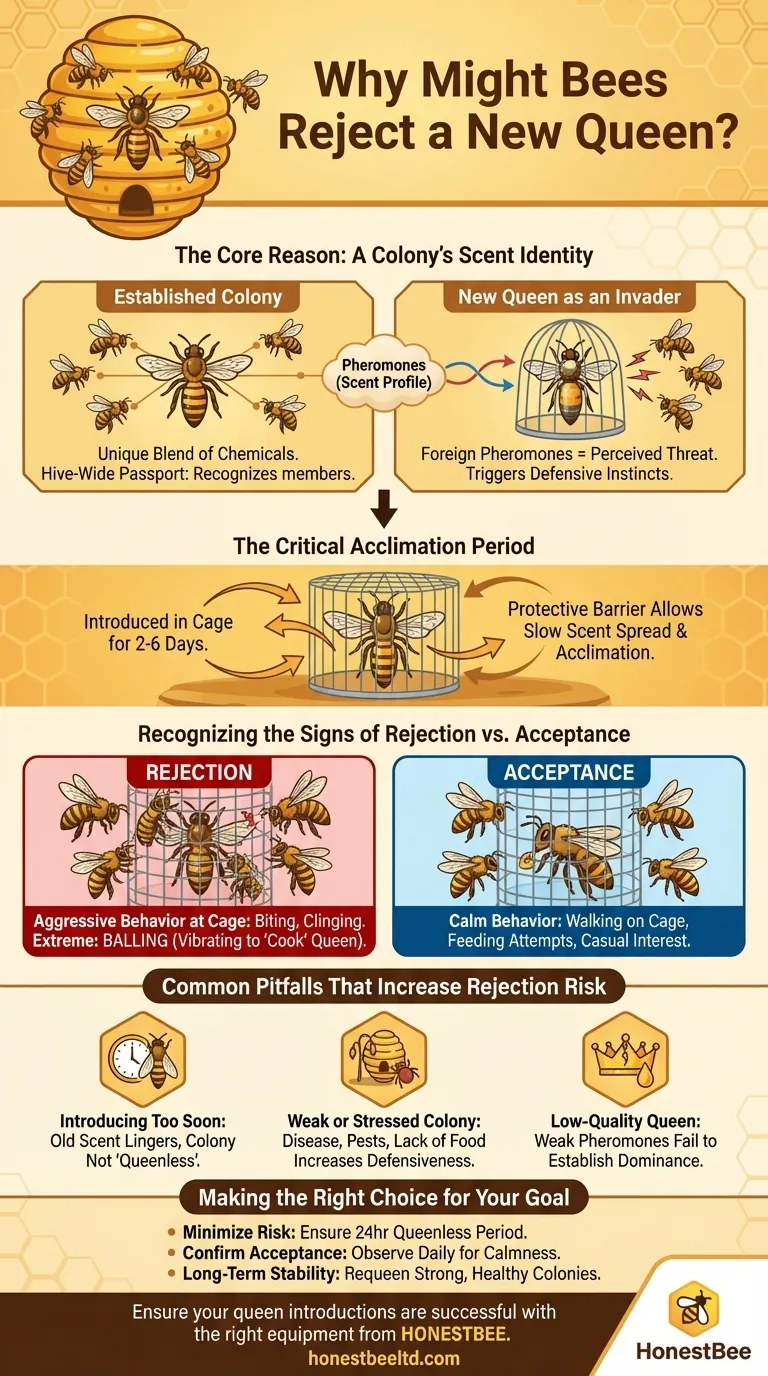
Related Products
- Professional Multi-Functional Queen Bee Cage
- Durable Galvanized Steel Spring Queen Bee Cage
- Multi-Function Queen Roller Cage and Catcher
- Wood and Mesh Push-In Queen Cage
- Hexagonal Direct Comb Introduction Queen Bee Cage
People Also Ask
- What is sequestration, and how does it help bees reorient? A Safer Guide to Hive Relocation
- What are common mistakes to avoid when using queen cages? Ensure Successful Queen Introduction
- What are the components of a standard queen cage? A Guide to Safe Queen Introduction
- What should be done if bees damage the queen cage or harm the queen? Rescue Your Queen and Save Your Hive
- How should a queen cage be maintained over time? Ensure Queen Introduction Success
